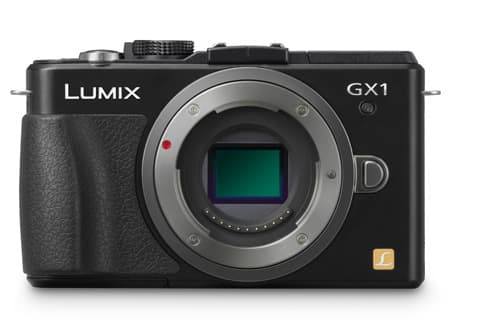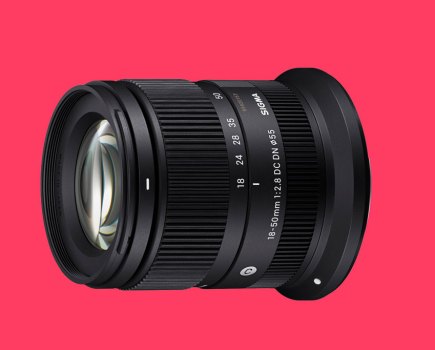YOKOHAMA ? Panasonic is restructuring its compact system camera (CSC) line-up to include a ?very high-end model?, mindful of the threat posed by the predicted entry of Canon into the CSC battleground.
However, it seems Panasonic has no plans to launch a CSC featuring an APS-C sized imaging sensor.
In an exclusive interview with Amateur Photographer (AP) at the CP+ Camera & Photo Imaging Show, Ichiro Kitao, director of Panasonic?s digital stills camera business, reasserted that the micro four thirds (MFT) sensor presents the best balance of camera size, lens size and pixel size for good image quality in a compact system camera.
?I want Panasonic to be known for very high-quality cameras, and we are currently restructuring the range of products that we offer to include a very high-end model,? he explained.
Kitao added: ?But we do not need to change our sensor size to do so. It already offers enough space for good resolution, and is actually not much smaller than APS-C anyway.?
Panasonic has constructed a scale of sensor sizes that measures the 1/2.33in compact camera sensor as 1, the LX size as 2x, and the 1in model used by Nikon?s 1 series as 5x. Micro four thirds measures 8x and APS-C 14x, while full-frame is 30x.
?Our sensors are 60% of the size of APS-C units, which is less than one step behind,? says Michiharu Uematsu, product planning group manager for Panasonic’s DSC Business Unit, ?and to use a larger sensor means we?d have to compromise on the size of our lenses, and thus the size of our system. MFT cameras need to be smaller.?
Kitao told us: ?Technology is moving all the time and image quality is as much about processing and optical quality as it is about sensor size. Our processing is improving and we are reducing noise at high ISO levels and improving detail resolution very quickly.
?Some companies that have used APS-C sensors in very small bodies have optical problems in the corners of their pictures. We don?t want to have that sort of situation, and have designed a back-focus distance that allows very good optical quality. Our focus now is on improving the quality of our lenses, and with the new X series we want more wide aperture optics that produce very high-quality images.?
Panasonic has already shown two new concept lenses it plans to launch this year ? a 35-100mm and a 12-35mm, both of which will feature a constant f/2.8 aperture across the zoom range. ?We are very good at making aspherical lenses,? Kitao told AP. ?And when we use them in our optical designs we can reduce the number of elements we need, and thus produce better optical quality.
?Using aspherical elements means we don?t need to use corrective elements, and so we reduce the possibility of flare and improve resolution.?
He revealed that, currently, the company is able to produce aspheric elements of up to 30mm in diameter, but that soon it will be possible for the factory to produce larger – paving the way for faster apertures.
?Optical quality is a serious focus at the moment,? said Kitao. ?Already our lenses are not far behind Leica?s in quality, but we will continue to use the Leica name on our best fixed-focal-length lenses, but the best zooms will be branded in our X range. ?People don?t expect to see the Leica name on zooms,? said Yoshiyuki Inoue, a senior engineering planner for Lumix.
?We still have a very strong relationship with Leica and we are learning a lot from the company?s philosophy, but we are also very good at designing and making lenses ourselves.?
Panasonic is not interested in expanding its range of camera products at the moment, but wants to concentrate on improving quality within the areas it operates. ?We want to become known as a high-quality camera brand, and this will be our concentration this year. We will aim for a high-end camera to demonstrate that mirrorless cameras can be alternatives to DSLR cameras, not just a step-up from compact cameras.
?The GF series is a step-up from compact cameras, but we want the GH and GX cameras to be seen as quality products.
?We will define more clearly what GH and GX means this year, so consumers have a better idea of what their characteristics are.?
Later, Inoue spoke about the company?s policy on autofocusing systems. Asked whether Panasonic had considered a sensor-based phase-detection system like that used by Fuji and Nikon, to help improve AF speeds he said: ?We are investigating phase-detection systems all the time? but while phase-detection can be faster there are too many errors and the AF sensor alignment is not always accurate, even when the sensors are built into the imaging sensor itself.
?We prefer the accuracy of contrast detection systems, and we are working on methods to make this faster rather than switching to a different system. We are researching ways to reduce the amount the focusing elements need to move (or wobble) to find the best focus position, and the algorithms that control this process. We are also trying to improve the readout speed of our sensors and the speed at which the focus information is processed so that any lack of sharpness is detected more quickly and focus can be found in less time. We are convinced that contrast detection is a better method for mirrorless systems.?
Panasonic has found success in the three years it has been working in micro four thirds, but it has done so with limited competition. Now brands such as Nikon, Pentax and Sony have also joined the mirrorless market – and combined with Olympus and Samsung, the picture is a little different.
Panasonic leads the way in sales and in the size of its system, but things are set to get tougher this year.
Kitao said he is not worried about most of the other brands, but admits that Sony is a threat and so will Canon be if the company launches its CSC – expected to be this year.
?That?s why we are concentrating on quality products and improving our range. We already have lenses from 14mm to 300mm, and we?ve already introduced nine camera bodies, but now we will make faster lenses and more compact pancakes. Panasonic will enhance its reputation as a top-quality camera manufacturer.?
[Editing by Chris Cheesman]
 Panasonic’s digital camera team, pictured at CP+ in Yokohama, Japan, last week
Panasonic’s digital camera team, pictured at CP+ in Yokohama, Japan, last week
Picture credit: Damien Demolder







